Sean Bienvenidos, Japonistasarqueológicos A Una Nueva Entrega, En Esta Ocasión Hablaré Sobre Actualidad




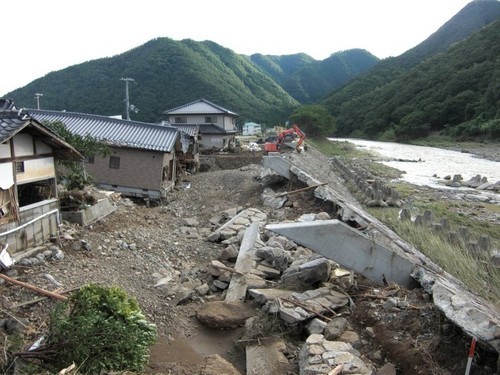
Sean bienvenidos, japonistasarqueológicos a una nueva entrega, en esta ocasión hablaré sobre actualidad nipona, una vez dicho esto pónganse cómodos que empezamos. — El domingo 16 de julio, azotaron fuertes lluvias al archipiélago nipón y hace no mucho el tifón Lan paralizó el tráfico aéreo de Japón y dejó miles de evacuados al oeste, además sin electricidad. Pero en este caso se han anegado muchas zonas del norte, causando efectos geográficos catastróficos y causando evacuaciones, etc. Por ejemplo: La ciudad de Akita registró precipitaciones, fue un récord, más de 250 milímetros durante un período de 48 horas, todo un hito histórico. — Espero que os guste y nos vemos en próximas publicaciones, que pasen una buena semana. - Welcome, Japanese archaeologists, to a new installment, this time I will be talking about Japanese current affairs, and once that is said, make yourselves comfortable and let's get started. - On Sunday 16th July, heavy rains hit the Japanese archipelago and not long ago Typhoon Lan paralysed Japan's air traffic and left thousands of evacuees in the west without electricity. But in this case many areas in the north have been flooded, causing catastrophic geographical effects and causing evacuations, etc. For example: The city of Akita recorded record rainfall of more than 250 millimetres over a 48-hour period, a historic milestone. - I hope you like it and see you in future posts, have a good week. - 日本の考古学者たちよ、新しい回へようこそ。今回は日本の時事問題についてお話しします。そう言ったら、くつろいで、始めましょう。 - 7月16日の日曜日、日本列島は大雨に見舞われ、少し前には台風12号が日本の空の便を麻痺させ、西日本では何千人もの避難者が停電に見舞われた。しかし今回は、北部の多くの地域が浸水し、地理的に壊滅的な影響を引き起こし、避難などを余儀なくされている。例えば:秋田市では、48時間に250ミリ以上の記録的な雨量を記録し、歴史的な出来事となった。 - お気に召していただけたなら幸いである.
More Posts from Noticiasarquelogicasjaponesas and Others

Sean bienvenidos, japonistasarqueológicos a una nueva entrega, en esta ocasión haré una introducción a que es la arqueología asistida a la arquitectura, una vez dicho esto pónganse cómodos que empezamos. - La arqueología, abarca muchos campos de estudios y épocas, desde la prehistoria hasta nuestro día, pero no estudia dinosaurios, lo siento, de eso se encarga la paleontología. En este caso, ¿Qué entendemos por Arqueología aplicada a la arquitectura?: pues atravez de sus restos arqueológicos nos permiten saber como eran las distintas arquitecturas de las distintas épocas. Por ejemplo: la arquitectura greco-romana y de la era vikinga, pero en este caso nos trasladamos al país del sol naciente y para que lo puedan entender mejor pongamos algunos ejemplos como las pagodas o edificios budistas e incluso casas de tipo foso en el periodo Jomon, solo por mencionar algunas cosas. - Gracias a esta disciplina y si la combinamos con la Arqueología 3D, pues el resultado es que con recreaciones virtuales o con la arqueología experimental nos permiten entender como se llevaron a cabo la labor de construcción y de abandono, etc. - Espero que os guste y nos vemos en próximas publicaciones, que pasen una buena semana. - Welcome, Japanese archaeologists to a new installment, this time I will make an introduction to what assisted archeology is to architecture, once said this, make yourself comfortable and let's start. - Archeology covers many fields of study and times, from prehistory to the present day, but it does not study dinosaurs, sorry, paleontology takes care of that. In this case, what do we understand by Archeology applied to architecture? Well, through its archaeological remains they allow us to know what the different architectures of the different eras were like. For example: Greco-Roman architecture and the Viking era, but in this case we move to the country of the rising sun and so that they can understand it better, let's give some examples such as pagodas or Buddhist buildings and even moat-type houses in the period Jomon, just to mention a few things. - Thanks to this discipline and if we combine it with 3D Archaeology, the result is that with virtual recreations or with experimental archeology they allow us to understand how the construction and abandonment work was carried out, etc. - I hope you like it and see you in future publications, have a good week. - 日本の考古学者の皆さん、新しい記事へようこそ。今回は、建築に対する考古学支援とは何かについて紹介します。これを言ったら、安心して始めましょう。 - 考古学は先史時代から現代に至るまで、多くの研究分野と時代をカバーしますが、恐竜については研究しません。申し訳ありませんが、古生物学がそれを担当します。 この場合、考古学を建築に適用すると、私たちは何を理解できるのでしょうか? そうですね、考古学的遺跡を通じて、さまざまな時代のさまざまな建築がどのようなものであったかを知ることができます。 例: ギリシャ・ローマ建築とバイキング時代。この場合は日出ずる国に移ります。理解が深まるように、塔や仏教の建物、さらには堀型の家などの例を挙げましょう。縄文時代のことについて少しだけ触れておきます。 - この専門分野のおかげで、これを 3D 考古学と組み合わせると、仮想レクリエーションや実験考古学を使用して、建設や放棄作業がどのように行われたのかなどを理解できるようになります。 - 気に入っていただければ幸いです。今後の出版物でお会いできることを願っています。良い一週間をお過ごしください。

Capítulo 1 El origen de un país y su prehistoria, un paseo por la historia del país del sol naciente. Sean bienvenidos, a una nueva serie, de arqueología prehistórica, en esta ocasión, nos trasladamos al país del sol naciente. ¿Cuándo llegaron por primera vez los homínidos a Japón? ¿De qué vivían? Todo y mucho más lo iremos viendo en los próximos capítulos. Dicho esto, pónganse cómodos que empezamos.
-
Antes que nada, un poco de geografía: En este apartado analizaremos la geografía nipona de aquellos entonces. La parte norte del país estaba bajo una gran capa de hielo, además, Japón estaba prácticamente unido, fue a finales del pleistoceno, cuando llegó el holoceno (hace unos 12000 años), previamente, tuvieron lugar cuatro glaciaciones(Günz, Mindel, Riss y Würm las cuales tuvieron lugar en el cuaternario).
-
El holoceno abarca hasta nuestros días, este efecto hace desaparecer a los grandes animales, plantas, etc. ¿Había dinosaurios en el archipiélago antes de la llegada de los humanos?, este punto no nos cunde, pero haré un pequeño resumen, para que se hagan una idea. -
Espero que os esté gustando, en los próximos capítulos hablaremos en profundidad de todo, os deseo un cordial saludo mis queridos fanáticos.
-
Chapter 1 The origin of a country and its prehistory, a walk through the history of the country of the rising sun. Welcome to a new series of prehistoric archeology, on this occasion, we move to the country of the rising sun. When did hominids first arrive in Japan? What did they live on? We will see everything and much more in the next chapters. That being said, get comfortable and let's get started.
-
First of all, a little geography: In this section we will analyze the Japanese geography of those times. The northern part of the country was under a large ice sheet, in addition, Japan was practically united, it was at the end of the Pleistocene, when the Holocene arrived (about 12,000 years ago), previously, four glaciations took place (Günz, Mindel, Riss and Würm which took place in the Quaternary).
-
The Holocene extends to the present day, this effect makes large animals, plants, etc. disappear. Were there dinosaurs in the archipelago before the arrival of humans? This point is not relevant to us, but I will give a brief summary to give you an idea.
-
I hope you are liking it, in the next chapters we will talk in depth about everything, I wish you a cordial greeting my dear fans.
-
第一章 国の成り立ちと先史、日出ずる国の歴史を歩く。 先史考古学の新しいシリーズへようこそ。この機会に、私たちは日出ずる国に移ります。 原人が日本に初めて到来したのはいつですか? 彼らは何を食べて生きていたのでしょうか? 次の章ですべてを見ていきます。 そうは言っても、安心して始めましょう。
-
まず最初に、地理について少し説明します。このセクションでは、当時の日本の地理を分析します。 国の北部は大きな氷床の下にあり、さらに日本は事実上統一されており、完新世が到来した更新世の終わり(約1万2000年前)であり、以前は4回の氷河期が起こっていた(ギュンツ、ギュンツ、第四紀に起こったミンデル、リス、ヴュルム)。 完新世は現在まで続き、この影響により大きな動物や植物などが消滅します。 人類が到来する前、この列島には恐竜がいたのでしょうか? この点は私たちには関係ありませんが、イメージを伝えるために簡単にまとめておきます。
-
気に入っていただければ幸いです。次の章ではすべてについて詳しく説明します。親愛なるファンの皆様に心からのご挨拶を申し上げます。




Sean bienvenidos, japonistasarqueologicos, al segundo capítulo del japón prehistórico y seguir recorriendo sus lugares mitológicos y mágicos una vez dicho esto póngase comandos que empezamos. - Para continuar nuestro viaje, más vale tarde que nunca pero despacio y con buena letra. Nos trasladamos a Kuromatayama una montaña con forma de pirámide, que se localiza en la meseta de Nakadori en el distrito Towada Oyu de la ciudad de Kazuno , prefectura de Akita. - En la década de 1992,se realizó una encuesta académica y como resultado, aunque esta montaña actualmente está cubierta de tierra, se descubrió que era una estructura artificial de unos 7 a 10 niveles que llegaban desde la base hasta la cima. Además, se halló una cavidad a 10 metros por debajo de la cumbre, y es muy probable que alguien esté enterrado allí. - Espero que os haya gustado y nos vemos en próximas publicaciones mis amantes del mundo japonés, que pasen una buena semana. - 考古学者の日本主義者の皆さん、先史時代の日本の第 2 章へようこそ。神話と魔法の場所を旅し続けてください。そう言われたら、コマンドを入力して始めましょう。 - 旅を続けるには、遅刻しないよりはマシですが、ゆっくりと良い字で書きましょう。 秋田県鹿角市十和田大湯地区の中通高原にあるピラミッド型の山「黒俣山」へ移動します。 - 1992年代に学術調査が行われた結果、この山は現在は土で覆われているものの、麓から頂上まで7~10層程度の人工構造物であることが判明した。 また、山頂から10メートルほど下には空洞が発見されており、人が埋葬されている可能性が高い。 - 日本の世界を愛する皆さん、良い一週間をお過ごしください。 - Welcome, archaeological Japanists, to the second chapter of prehistoric Japan and continue touring its mythological and magical places. Once that has been said, put in commands and let's begin. - To continue our journey, better late than never but slowly and with good handwriting. We move to Kuromatayama, a pyramid-shaped mountain, located on the Nakadori Plateau in the Towada Oyu district of the city of Kazuno, Akita Prefecture. - In the 1992s, an academic survey was conducted and as a result, although this mountain is currently covered with earth, it was found to be an artificial structure of about 7 to 10 levels reaching from the base to the top. Additionally, a cavity was found 10 meters below the summit, and it is very likely that someone is buried there. - I hope you liked it and see you in future posts my lovers of the Japanese world, have a good week.





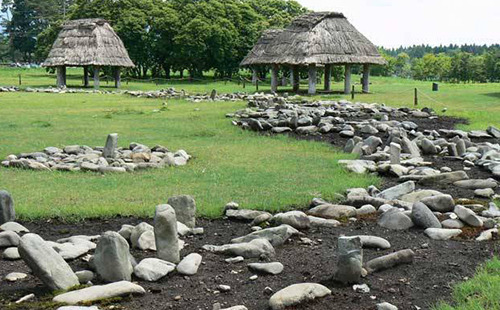
Sean bienvenidos, japonsitasarqueologícos a una nueva entrega en la que hablaremos de un Trending Topic, ya que el país del sol naciente está de moda pues le vamos a sacar beneficios y no es el único tema que están sabiendo explotar, para sacarle el mayor partido. - Lo que vengo a referirme, es que las modas son puro negocio, de lo más nocivo que nos podemos llevar a la cara, antes de que Japón estuviera de moda ya había muchos fakes, pero ahora se han duplicado e incluso triplicado. No hay que creerse todo lo que leamos por internet, siempre hay que cuestionarse las cosas, en este caso vamos a sentarnos, en dos monumentos uno localizado en Inglaterra y otro en japón. - El primero, se trata de stonehenge: Construido en el cuarto mileno 3100 antes de nuestra era, que cada vez se actualizan sus funciones la última más reciente es que no puede ser usado como un calendario solar. El segundo, se trata de Isedōtai site, localizado en la prefectura de Akita, en la región de Tōhoku en el noroeste de Japón, construido en el quinto milenio 4000 a.c en el jomon final. Se usó como calendario solar y posiblemente para los solsticios de verano e invierno. - El tema de esta publicación no es hablar de ninguno de los dos en profundidad, sino criticar a los lucidos, que sitúan stonehenge y Isedōtai site en la misma recta cronológica lo cual es una falacia por que hay por lo menos 1100 a 1500 años de diferencia aproximadamente entre ambas construcciones. - Ese es el problema del occidentalismo y eurocentrismo sobre todo la manía de colocarlo todo en una recta cronológica las fechas son algo aproximadas al igual que las rectas temporales. - Espero que os haya gustado y nos vemos en próximas publicaciones que pasen una buena semana.
Welcome, japonsitasarchaeologists, to a new edition in which we will talk about a Trending Topic, since the country of the rising sun is in fashion, we are going to make the most of it and it is not the only topic that they are knowing how to exploit, to make the most of it. - What I am referring to is that fashions are pure business, the most harmful thing we can take to our faces. Before Japan was in fashion there were already many fakes, but now they have doubled and even tripled. We should not believe everything we read on the internet, we should always question things, in this case we are going to sit on two monuments, one located in England and the other in Japan. - The first one is stonehenge: Built in the fourth millennium 3100 B.C., its functions are updated every time, the latest one is that it cannot be used as a solar calendar. The second is the Isedōtai site, located in Akita prefecture, in the Tōhoku region of northwestern Japan, built in the fifth millennium 4000 BC in the final jomon. It was used as a solar calendar and possibly for the summer and winter solstices. - The subject of this publication is not to discuss either in depth, but to criticise the lucid, who place stonehenge and Isedōtai site in the same chronological line which is a fallacy because there is at least 1100 to 1500 years difference approximately between the two constructions. - That is the problem of westernism and eurocentrism, especially the mania of placing everything on a chronological line, the dates are somewhat approximate, as are the time lines. - I hope you liked it and see you in future publications. Have a nice week.
旭日旗が流行しているので、それを最大限に利用するつもりだ。そして、彼らがそれを最大限に利用する方法を知っているのは、この話題だけではない。
私が言いたいのは、ファッションは純粋なビジネスであり、最も有害なものであるということだ。 日本が流行する前からすでに多くの偽物があったが、今では倍増し、3倍にもなっている。インターネット上の情報を鵜呑みにするのではなく、常に物事を疑ってみる必要がある。
ひとつはストーンヘンジで、紀元前3100年の第四千年紀に建てられた。 もうひとつは、東北地方の秋田県にある伊勢堂岱遺跡で、紀元前4000年、縄文末期の第5千年紀に作られた。
太陽暦として使われ、おそらく夏至と冬至にも使われた。
本書の主題は、どちらか一方を深く論じることではなく、ストーンヘンジと伊勢堂岱遺跡を同じ年代線上に置く明晰な人々を批判することである。
それが西洋主義とヨーロッパ中心主義の問題点であり、特にあらゆるものを年代順に並べようとするマニアの問題点である。
お気に召していただけたなら幸いである。 それではまた。





Sean bienvenidos, japonistasarqueologicos a una entrega de arquitectura japonesa una vez dicho esto pagase cómodos que empezamos. - Esta pagoda se localiza en Kyoto y data del siglo XV, a este tipo de pagodas se les llama Tahōtō, se caracteriza por tener solo dos plantas, las ventanas tienen forma de flor de loto, clara influencia de china y Korea. - Espero que os haya gustado y nos vemos en próximas publicaciones que pasen una buena semana. - ジャポニスタサルケオロギコスの皆さん、日本建築の配信へようこそ。そうは言っても、安心して始めてください。 - この塔は京都にあり、15 世紀に建てられました。このタイプの塔は多宝塔と呼ばれ、2 階しかないのが特徴で、窓は蓮の花の形をしており、明らかに中国と韓国の影響を受けています。 - 気に入っていただければ幸いです。今後の投稿でお会いしましょう。良い一週間をお過ごしください。 - Welcome, japonistasarqueológicos to a delivery of Japanese architecture, having said this, pay comfortable that we start. - This pagoda is located in Kyoto and dates from the 15th century, this type of pagoda is called Tahōtō, it is characterized by having only two floors, the windows are in the shape of a lotus flower, a clear influence from China and Korea. - I hope you liked it and see you in future posts, have a good week.



Sean bienvenidos a una nueva entrega de cultura e historia japonesa, en este caso vamos a hablar sobre la torre Goryokaku, localizada en Hakodate en la prefectura de Hokkaido al norte de la isla de Honshu. - La torre Goryokaku, mide 60 m de altura, fue construida en diciembre de 1964, correspondiente a la era showa para conmemorar el centenario de la construcción del Goryokaku. La antigua torre fue disfrutada por ciudadanos y turistas durante 41 años, fue demolida en junio de 2006 tras la finalización de la nueva torre, dejando su misión a la nueva torre, para que nuevas generaciones la puedan disfrutar. - En este lugar, que sirvió de influencia para el anime Golden kamui ya que muestra la fortaleza en construcción durante el siglo XIX. Ojo, no hay que tomarse como verdadero, todo este tipo de lugares en lo que respecta a películas y series ya que siempre tienen errores pero para hacerse una idea de cómo era el lugar en aquella época, esta bien pero siempre cogerlo con pinzas. - Espero que os haya gustado y nos vemos en próximas publicaciones, que pasen una buena semana. - 今回は、本州の北、北海道の函館にある五稜郭タワーについてです。 - 高さ60mの五稜郭タワーは、昭和に相当する1964年12月、五稜郭築造100周年を記念して建てられた。旧タワーは41年間、市民や観光客に親しまれてきたが、新タワー完成後の2006年6月、その使命を新タワーに託し、新たな世代が楽しめるよう解体された。 - 19世紀に建設中の要塞の様子が描かれ、アニメ「ゴールデンカムイ」に影響を与えたこの場所で、塔は新しい塔の完成後、2006年6月に取り壊された。注:映画やシリーズに関する限り、この種の場所には必ず間違いがあるので、すべて真実だと思わないでほしいが、当時の場所の様子を知るには問題ない。 - それでは、また次の記事でお会いしましょう。 - Welcome to a new installment of Japanese culture and history, in this case we are going to talk about the Goryokaku tower, located in Hakodate in Hokkaido prefecture in the north of the island of Honshu. - The Goryokaku Tower, 60 m high, was built in December 1964, corresponding to the showa era to commemorate the 100th anniversary of the construction of the Goryokaku. The old tower was enjoyed by citizens and tourists for 41 years, it was demolished in June 2006 after the completion of the new tower, leaving its mission to the new tower, so that new generations can enjoy it. - At this site, which served as an influence for the Golden kamui anime as it shows the fortress under construction during the 19th century, the tower was demolished in June 2006 after the completion of the new tower, leaving the mission to the new tower for new generations to enjoy. Note, do not take as true, all this kind of places as far as movies and series are concerned as they always have mistakes but to get an idea of how the place was at that time, it's ok but always take it with tongs. - I hope you liked it and see you in the next posts, have a nice week. Translated with DeepL.com (free version)

Sean bienvenidos japonesasarqueológicos a una nueva entrega arqueológica, en esta ocasión hablaremos de la primera moneda japonesa atrás vez de los restos Arqueológicos y de evidencias históricas dicho esto pónganse cómodos que empezamos. - ¿Cuándo surge la moneda en Japón? La primera moneda, oficialmente nace en el año 708 d.c llamada Wadokaichin, mientras tanto que en otros continentes del mundo como china o en el próximo oriente ya se habían creado la moneda y los primeros sistemas monetarios. ¿Qué había antes del 708 d.c? Pues había dos protomonedas una en el año 660 d.c. otra en el año 683, habían tomado como modelo la moneda china de 621 d.c - ¿Cómo se llamaban las dos monedas anteriores al siglo VIII d.c? Fuhonsen data del año 683 d.c y fue descubierta en 1998 Mumonginsen datada del año 660 d.c - La moneda Mumonginsen coincide con la leyenda de la fundación del estado japonés por el primer emperador Jinmu Tennō, según la historiografía moderna lo consideran un personaje ficticio hay que tener en cuenta que toda leyenda tiene una base real. - ¿Qué emperadores podemos encontrar en esta cronología según la historiografía y los restos arqueológicos? Los emperadores eran Tenji y Tenmu tennō. ¿Dónde fueron encontradas dichas monedas? fueron halladas en las ruinas de Asukaile en la prefectura de Nara en el pueblo de Asuka. - ¿Conocían estas monedas?¿Qué opinan ustedes al respecto? Espero que os haya gustado y nos vemos en la próxima publicación de arqueología nipona. - 日本の考古学者は新しい考古学の記事を歓迎します。今回は、考古学的遺跡や歴史的証拠の代わりに、最初の日本のコインについて話します。 - 日本ではいつ通貨が出現しますか?最初の通貨は、和同開珀と呼ばれる西暦708年に正式に誕生しましたが、中国や中東などの世界の他の大陸では、通貨と最初の通貨制度がすでに作成されていました。西暦708年以前は何がありましたか?ええと、2つのプロトコインがありました。1つは西暦660年にありました。別の683年に、彼らは621ADの中国の硬貨をモデルとして採用しました。 .- 8世紀以前の2枚の硬貨は何と呼ばれていましたか? 富本銭は西暦683年にさかのぼり、1998年に発見されました。 西暦660年のムモンギンセン ムモンギンセンの硬貨は、初代神武天皇による日本国家の建国の伝説と一致しており、現代の歴史学によれば、彼は架空の人物であると考えられており、すべての伝説には本当の根拠があることを考慮に入れる必要があります。 - 歴史学と考古学的遺跡によると、この年代学でどの皇帝を見つけることができますか?天武天皇は天武天皇と天武天皇でした。これらのコインはどこで見つかりましたか?奈良県のあすか町のあすかいれ廃墟で発見されました。 - これらのコインを知っていましたか?それについてどう思いますか?あなたがそれを気に入って、次の日本の考古学の出版物であなたに会えることを願っています。 - Japanese archaeologists are welcome to a new archaeological installment, this time we will talk about the first Japanese coin back instead of the Archaeological remains and historical evidence, having said that, make yourself comfortable, we begin. - When does currency emerge in Japan? The first currency was officially born in the year 708 AD called Wadokaichin, meanwhile in other continents of the world such as China or the Middle East the currency and the first monetary systems had already been created. What was there before 708 AD? Well, there were two proto-coins, one in the year 660 AD. another in the year 683, they had taken as a model the Chinese coin of 621 AD .- What were the two coins before the 8th century AD called? Fuhonsen dates back to 683 AD and was discovered in 1998. Mumonginsen dated to 660 AD The Mumonginsen coin coincides with the legend of the foundation of the Japanese state by the first emperor Jinmu Tennō, according to modern historiography they consider him a fictitious character, it must be taken into account that all legends have a real basis. - Which emperors can we find in this chronology according to historiography and archaeological remains? The emperors were Tenji and Tenmu tennō. Where were these coins found? They were found in the Asukaile Ruins in Nara Prefecture in the town of Asuka. - Did you know these coins? What do you think about it? I hope you liked it and see you in the next Japanese archeology publication.

Sean bienvenidos, japonistasarqueológicos a un nuevo especial, en esta ocasión vengo a celebrar que ya somos 2726 seguidores mil gracias por el apoyo que le dais a este proyecto que empezó en diciembre de 2021 y para esta ocasión os voy a traer una publicación de historia del arte japonés, ya que me lo habéis pedido. Además, es el arte que más me gusta, ya el del resto del mediterráneo, no me gusta para nada en absoluto dicho esto comencemos. - La pintura que podéis apreciar data del siglo XIX fue realizada en papel de hierva, el autor se llama Hiroshige Utagawa, pero su nombre real fue Tokutaro, estudio el arte occidental y fue uno de los personajes más destacados en lo que respecta al arte del paisaje. ¿Conocían a este artista? ¿Os gustaría que hablara de él? Dejármelo en los comentarios. - Espero que os haya gustado y nos vemos en próximas publicaciones de arqueología e historia japonesa. - 考古学ジャポニストの皆さん、ようこそ、新しいスペシャルへ。今回は、私たちのフォロワーがすでに 2726 人に達したことを祝うために来ました。2021 年 12 月に始まったこのプロジェクトへのサポートに感謝します。この機会に、日本美術史の出版をお願いしたので。 さらに、それは私が最も好きな芸術であり、地中海の残りの部分ではまったく好きではありません. そうは言っても、始めましょう. - ご覧になれる絵は19世紀にさかのぼる草紙に描かれたもので、作者は広重さんです。 歌川は本名を徳太郎といい、洋画を学び、山水画の第一人者でした。 このアーティストを知っていましたか? 彼について話してくれませんか? コメントで私に任せてください。 - 考古学と日本史の今後の出版物でお会いしましょう。 - Welcome, archeological japonists to a new special, this time I come to celebrate that we are already 2726 followers, thank you very much for the support you give to this project that began in December 2021 and for this occasion I am going to bring you a publication of the history of the Japanese art, since you have asked me. In addition, it is the art that I like the most, and that of the rest of the Mediterranean, I do not like it at all. Having said that, let's begin. - The painting that you can see dates back to the 19th century and was made on grass paper. The author's name is Hiroshige. Utagawa, but his real name was Tokutaro, he studied western art and was one of the most prominent people when it comes to landscape art. Did you know this artist? Would you like me to talk about him? Leave it to me in the comments. - I hope you liked it and see you in future publications of archeology and Japanese history.
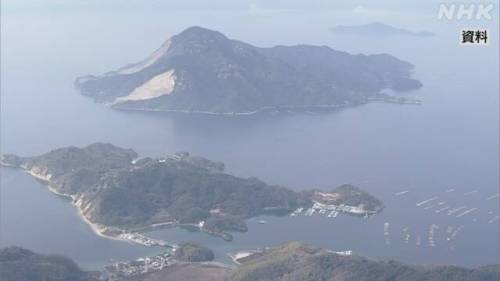
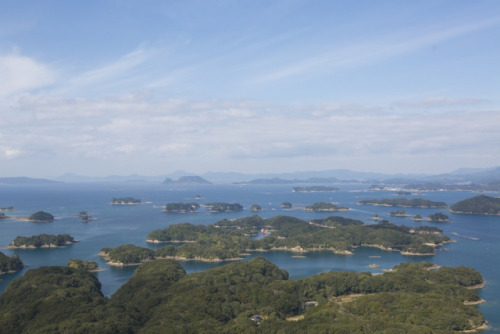
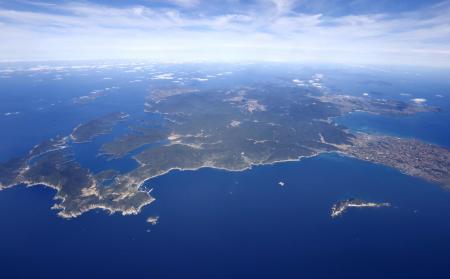

Sean bienvenidos japonistaarqueológicos, a una nueva actualidad del país del sol naciente. En este caso os comentaré que se han actualizado los datos del número de islas del archipiélago Japonés, dicho esto pónganse cómodos que empezamos. - La información viene de la agencia Geoespacial de Japón, el número de islas son de 14125 en todo el país, más del doble del número anunciado hasta ahora, en 1987 el cálculo era de 6852 islas. - El número de islas en cada prefectura Nagasaki 1479 Hokkaido 1473 Kagoshima 1256 Iwate 861 Okinawa 691. - ¿Qué opinan al respecto? Espero que tengan una buena semana y nos vemos en próximas publicaciones de Japón - 日出づる国から新しいニュースへようこそ。今回は、日本列島の島の数が更新されたことをお伝えします。 - 国土地理院からの情報ですが、日本全国の島の数は14125で、今まで発表されていた数(1987年は6852島)の2倍以上になっています。 - 各都道府県の島嶼数 長崎県 1479 北海道 1473 鹿児島県 1256 岩手県 861 沖縄県 691 - いかがでしょうか?今週も良い一週間をお過ごしください。また、今後の日本からの投稿でお会いしましょう。 - Welcome to a new update from the land of the rising sun. In this case I will tell you that we have updated the data on the number of islands in the Japanese archipelago, so make yourselves comfortable and let's get started. - The information comes from the Geospatial agency of Japan, the number of islands is 14125 in the whole country, more than double the number announced until now, in 1987 the estimate was 6852 islands. - The number of islands in each prefecture Nagasaki 1479 Hokkaido 1473 Kagoshima 1256 Iwate 861 Okinawa 691. - What do you think about it? I hope you have a good week and see you in future posts from Japan.
Sean bienvenidos, japonistasarqueologicos a una nueva entrega de historia nipona en la que os explico la evolución del artefacto Tanegashima, una vez dicho esto pónganse cómodos, que empezamos. - Fue introducido por los portugueses en 1543, en pleno periodo Muromachi desde la isla que lleva su mismo nombre, el polvo negro químico fue inventado por los chinos en el siglo IX, se usaba para los fuegos artificiales, después se trasladó a otros ámbitos. - Se cuenta que cuando llegó a Japón, un herrero vendió a su hija para poder producir dicho artefacto, era un producto raro y poco efectivo, no todos los samuráis la utilizaban, ya que muchos preferían, todavía, las técnicas tradicionales más efectivas, además la consideraban un elemento deshonroso. El hecho más notable fue el 28 de junio de 1575 en Nagashino, en la Provincia de Mikawa. El clan de Oda Nobunaga se enfrentaba contra el clan Takeda conocido por su temible caballería, Oda Nobunaga emplearía unas empalizadas para proteger a sus soldados de las sucesivas cargas, en esta batalla se usaría el artefacto en masa. Esto lo podéis ver en el famoso videojuego de Total War: Shogun 2. - Esperó que os haya gustado y nos vemos en próximas publicaciones que pasen una buena semana. - 日本の考古学者の皆さん、種子島の遺物の変遷を説明する新しい日本史へようこそ。 - 室町時代中期の 1543 年に、同じ名前の島からポルトガル人によって導入されました。化学黒色火薬は 9 世紀に中国人によって発明され、花火に使用されましたが、その後他の用途に移りました。地域。 - 彼が日本に到着したとき、鍛冶屋はその工芸品を製造できるように娘を売ったと言われています。それは希少で非効率な製品でした。多くの武士が依然として最も効果的な伝統的な技術を好んだため、すべての武士がそれを使用したわけではありません。彼らはそれを考慮しました不名誉な要素。 最も注目すべき出来事は、1575 年 6 月 28 日に三河国長篠で起こった。 織田信長の一族は、恐ろしい騎兵で知られる武田家と対峙しました。織田信長は連続突撃から兵士を守るために柵を使用しました。この戦いでは、アーティファクトが一斉に使用されました。 これは、有名なビデオ ゲーム Total War: Shogun 2 で見ることができます。 - 気に入っていただければ幸いです。今後の投稿でお会いしましょう。良い一週間をお過ごしください。 - Welcome, Japanesearchaeologicalists, to a new installment of Japanese history in which I explain the evolution of the Tanegashima artifact. Having said that, make yourself comfortable, let's begin. - It was introduced by the Portuguese in 1543, in the middle of the Muromachi period from the island that bears the same name. The chemical black powder was invented by the Chinese in the 9th century. It was used for fireworks, then it moved to other areas. - It is said that when he arrived in Japan, a blacksmith sold his daughter to be able to produce said artifact. It was a rare and ineffective product. Not all samurai used it, since many still preferred the most effective traditional techniques. They considered it a dishonorable element. The most notable event was on June 28, 1575 in Nagashino, Mikawa Province. Oda Nobunaga's clan faced the Takeda clan, known for its fearsome cavalry. Oda Nobunaga would use palisades to protect his soldiers from successive charges. In this battle, the artifact would be used en masse. You can see this in the famous video game Total War: Shogun 2. - He hoped you liked it and see you in future posts, have a good week.
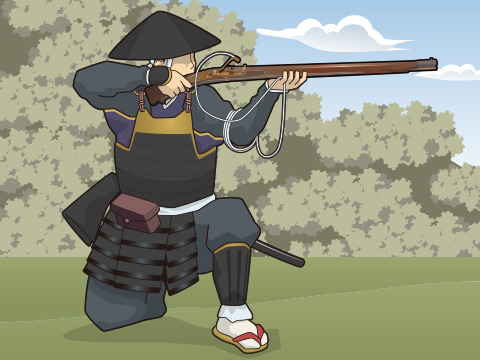

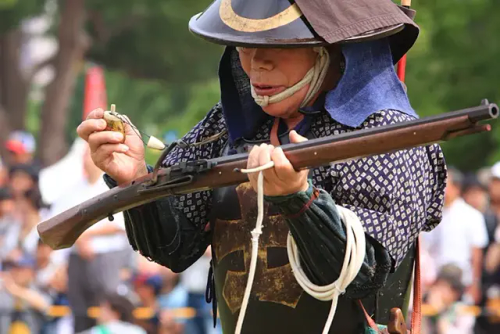
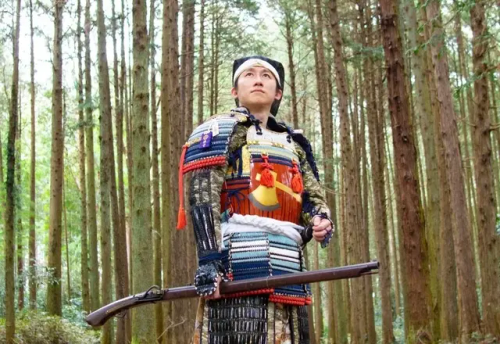
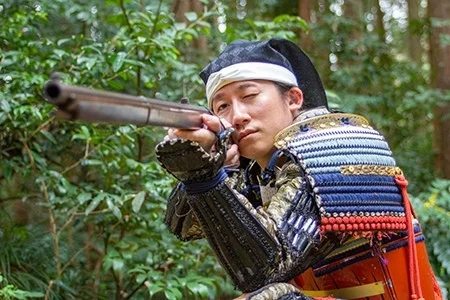

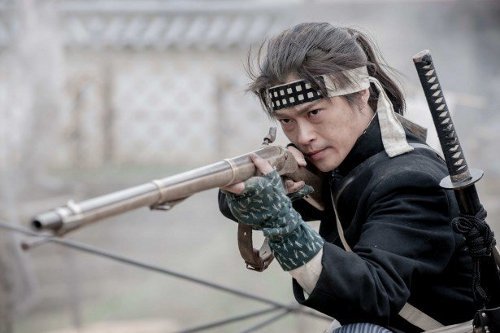
-
 repera23 liked this · 1 year ago
repera23 liked this · 1 year ago -
 corse2b liked this · 1 year ago
corse2b liked this · 1 year ago -
 vivencias-del-alma liked this · 1 year ago
vivencias-del-alma liked this · 1 year ago -
 aloneinthedark-eagle liked this · 1 year ago
aloneinthedark-eagle liked this · 1 year ago -
 u-nobu liked this · 1 year ago
u-nobu liked this · 1 year ago -
 adam-trademark liked this · 1 year ago
adam-trademark liked this · 1 year ago -
 ehlaya liked this · 1 year ago
ehlaya liked this · 1 year ago -
 bear-pattern-hamster liked this · 1 year ago
bear-pattern-hamster liked this · 1 year ago -
 emaadsidiki liked this · 1 year ago
emaadsidiki liked this · 1 year ago -
 noticiasarquelogicasjaponesas reblogged this · 1 year ago
noticiasarquelogicasjaponesas reblogged this · 1 year ago -
 naser1963 liked this · 1 year ago
naser1963 liked this · 1 year ago -
 rodolfo9999 liked this · 1 year ago
rodolfo9999 liked this · 1 year ago -
 1-125sec-f8-10feet liked this · 1 year ago
1-125sec-f8-10feet liked this · 1 year ago -
 cchris47 liked this · 1 year ago
cchris47 liked this · 1 year ago -
 shimagoro4056 liked this · 1 year ago
shimagoro4056 liked this · 1 year ago -
 ruinedren52 liked this · 1 year ago
ruinedren52 liked this · 1 year ago -
 radoxon liked this · 1 year ago
radoxon liked this · 1 year ago -
 hiromusicarts-blog liked this · 1 year ago
hiromusicarts-blog liked this · 1 year ago -
 sicks93 liked this · 1 year ago
sicks93 liked this · 1 year ago -
 noticiasarquelogicasjaponesas reblogged this · 1 year ago
noticiasarquelogicasjaponesas reblogged this · 1 year ago

238 posts